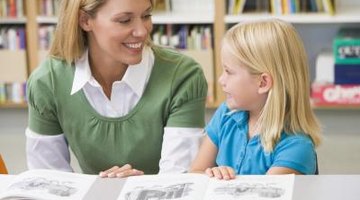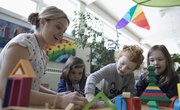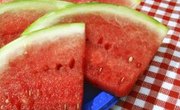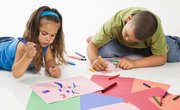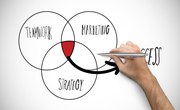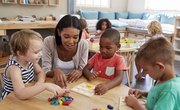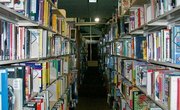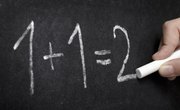"City Mouse, Country Mouse" is an Aesop fable that tells the story of two mice who take turns experiencing each other's lives in places much different from their homes. There are several modern versions of the fable, and they can be used to teach a variety of literacy, math, art, science and social studies concepts.
Reading and Writing Activities
After reading the fable, divide the class in half and ask one half to be country mice and the other half to be city mice. Have the students draw pictures of their homes and write a few simple words or a short sentence about their pictures. This encourages the students to walk in the shoes of someone different, but also gives them practice with writing and sounding out words. After this activity, ask each kindergartner to write a thank you note to a mouse from the other place. For example, a student in the city mouse group would write a note to a country mouse, thanking him for inviting her to visit. Have the students include one or two examples of why they're glad they were invited, such as an example of a tasty food or enjoyable activity.
Social Studies Activities
As a whole group, divide a piece of chart paper in half and label one side "country" and the other side "city." Make a list on each side describing such elements as housing, neighborhoods, yard size, different foods eaten in each place and other similarities and differences between the two habitats. Give kindergartners a piece of paper divided in half with a black line, one side labeled "country" and the other side labeled "city." Ask the students to look through magazines and cut out pictures of items they might see in the country or in the city and glue them to the appropriate columns on the paper. Invite the students to share their papers, including one or two reasons why they would choose one home over the other. Having kindergartners memorize their own addresses is a good supplemental activity.
Math Activities
Identify one area of your classroom as the country and one area as the city. Introduce measurement concepts into your classroom by asking the kindergartners to measure the distance between the two areas. The students could measure by counting their footsteps or by using meter sticks or rulers. Have the children record their results. Show students several pictures of mice and have them sort them by color and size. Do the same activity with stuffed mice if you have access to several that are different colors and sizes. Sorting helps students learn to identify items by describing characteristics such as black, brown, small and large.
Art and Other Miscellaneous Activities
Do an art activity with elements of math and social studies by asking kindergartners to draw maps that show the city house and the country house. For example, the city house part of the map would show buildings, stores and other city buildings, while the country part of the map will have more nature areas. Bring a bit of science into your classroom by working with your kindergartners to learn about real mice. Show the students pictures of mice and discuss their habitats and what kinds of foods they eat. Reinforce the concept of fiction versus nonfiction by analyzing the fable and discussing why it's an example of fiction. Have the students make city mouse and country mouse puppets and use them to retell the stories to their classmates.
Related Articles
References
Writer Bio
Sara Ipatenco has taught writing, health and nutrition. She started writing in 2007 and has been published in Teaching Tolerance magazine. Ipatenco holds a bachelor's degree and a master's degree in education, both from the University of Denver.

